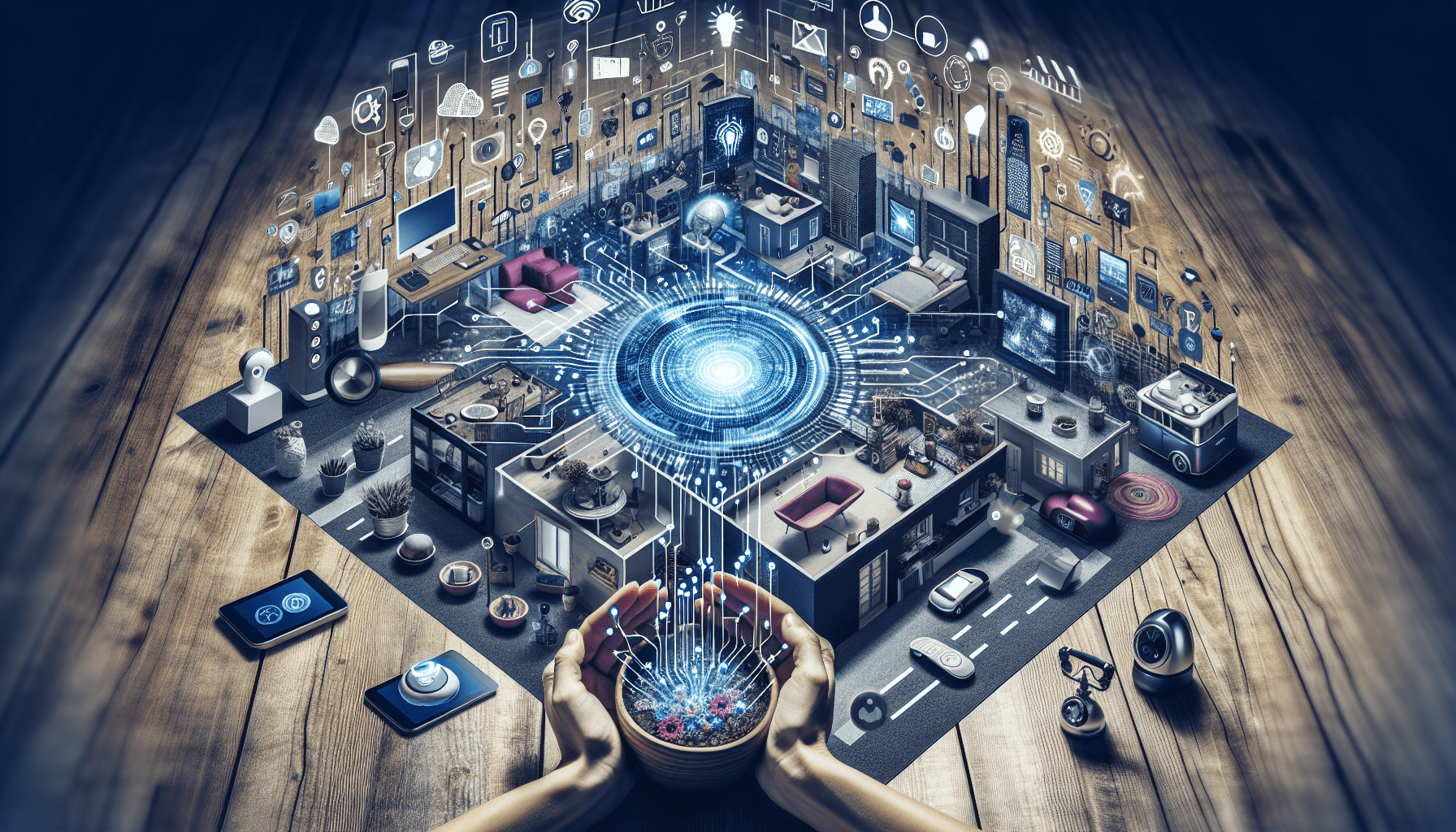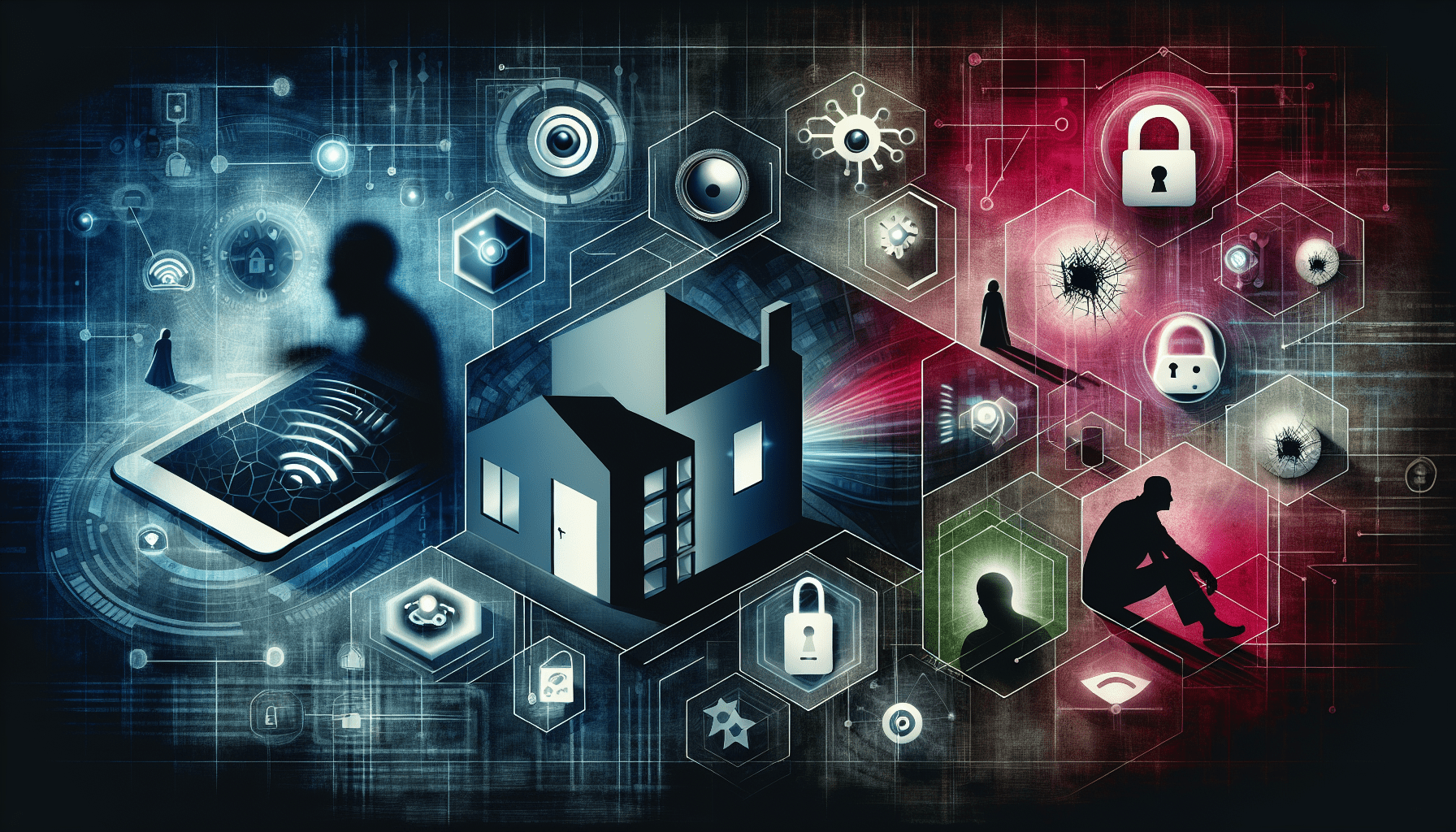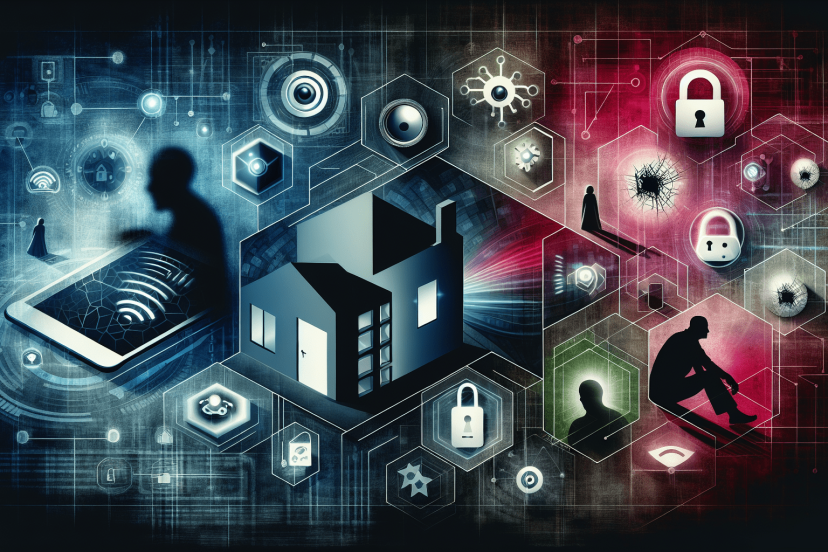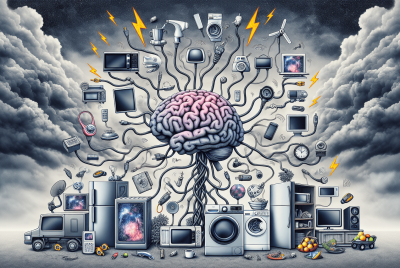What Are The Negative Effects Of Smart Technology In Homes?
Imagine a world where your home anticipates your every need and responds to your every command – a world where your lights automatically adjust to your preferred level of brightness, your thermostat knows when to adjust the temperature, and your refrigerator orders groceries before you even realize you’re running low. This is the promise of smart technology in homes. While it may seem like a futuristic dream come true, it’s important to consider the potential negative effects that come with this level of convenience. In this article, we will explore some of the downsides of smart technology and how it can impact various aspects of our lives.

Privacy Concerns
Intrusion of personal privacy
One of the main concerns associated with smart technology in homes is the intrusion of personal privacy. With the increasing number of connected devices, there is a constant stream of data being collected and shared. This data includes information about your daily routine, habits, and preferences. While this information may be used to enhance your user experience, there is always a risk of it being accessed by unauthorized individuals or companies. This intrusion of privacy raises questions about data security and the potential misuse of personal information.
Data collection and surveillance
Smart technology relies heavily on data collection to provide personalized experiences and improve functionality. However, this constant monitoring and surveillance raise concerns about the extent of data being collected and who has access to it. From the devices we use to the apps we interact with, our activities and behaviors are constantly being tracked. This not only compromises privacy but also creates a potential risk for targeted advertising, profiling, and manipulation of personal information.
Potential for hacking and cyber attacks
As smart technology becomes more prevalent in homes, the potential for hacking and cyber attacks increases. The interconnectedness of devices and networks provides opportunities for malicious individuals to gain unauthorized access to sensitive information or even take control of devices remotely. This can result in serious consequences, ranging from identity theft to the compromise of home security systems. The constant evolution of technology also means that new vulnerabilities are constantly being discovered and exploited, making it a continuous challenge to ensure the security of smart technology in homes.
Health Risks
Electromagnetic radiation exposure
One of the health risks associated with smart technology in homes is exposure to electromagnetic radiation. Smart devices, such as Wi-Fi routers and smartphones, emit electromagnetic fields (EMFs) that have been linked to various health concerns. Prolonged exposure to EMFs has been associated with symptoms such as headaches, fatigue, and difficulty concentrating. While the long-term effects of exposure are still being studied, it is important to be mindful of the potential health risks and take necessary precautions, such as limiting exposure or using EMF shielding devices.
Negative impact on sleep patterns
The increasing use of smart devices, particularly in the bedroom, has been shown to have a negative impact on sleep patterns. Smartphones, tablets, and even smart TVs emit blue light, which can disrupt the body’s natural sleep-wake cycle. The constant exposure to screens before bedtime can make it difficult to fall asleep and result in poor quality sleep. Additionally, the notifications and alerts from smart devices can interrupt sleep, leading to fragmented and restless nights. It is important to establish a healthy bedtime routine and limit the use of smart technology in the bedroom to promote better sleep hygiene.
Increased sedentary lifestyle
Smart technology has the potential to contribute to a more sedentary lifestyle. With the advent of voice assistants, automated systems, and smart home features, tasks that were once done manually can now be accomplished with a simple voice command or the touch of a button. While this convenience is undoubtedly beneficial, it also reduces physical activity and can lead to a more sedentary lifestyle. The lack of movement and physical exertion can have negative effects on overall health, including weight gain, muscle weakness, and an increased risk of chronic diseases such as heart disease and diabetes. It is important to balance the use of smart technology with regular physical activity to maintain a healthy lifestyle.
Dependency and Reliability
Reliance on technology for daily tasks
As smart technology becomes more integrated into our daily lives, there is a growing dependency on these devices for even the most basic tasks. From setting alarms and reminders to controlling home appliances, many individuals rely on smart technology to streamline their daily routines. While this dependence can increase efficiency and convenience, it also leaves individuals vulnerable to disruptions in case of malfunctions or power outages. Relying solely on smart technology for essential tasks can lead to significant inconveniences and disruptions if the system fails or experiences technical difficulties.
Potential disruption in case of malfunction or power outage
Smart technology relies heavily on a stable power source and a functioning network connection. In the event of a power outage or technical malfunction, the functionality of smart devices may be compromised. This can result in a sudden loss of control over various aspects of the home, such as heating and cooling systems, security systems, and lighting. Additionally, without a stable internet connection, smart devices may not be able to receive updates or sync with other devices. It is important to have backup plans and alternative solutions in place to mitigate the potential disruption caused by malfunctions or power outages.

Financial Burden
High initial costs
One significant barrier to adopting smart technology in homes is the high initial costs associated with purchasing and installing these devices. Smart appliances, security systems, and home automation devices tend to have higher price tags compared to their non-smart counterparts. Additionally, incorporating multiple smart devices into a home can quickly add up to a substantial investment. While the costs may decrease over time as technology advances and becomes more accessible, the upfront expense can be a significant financial burden for many homeowners.
Continuous expenses for upgrades and maintenance
In addition to the initial costs, smart technology in homes often requires continuous expenses for upgrades and maintenance. As technology advances and new features are introduced, older devices may become outdated and require replacement. Upgrades to software and firmware may also be necessary to ensure compatibility and functionality. These ongoing expenses can strain financial resources and make it challenging to keep up with the rapid pace of technological advancements.
Potential increase in energy consumption and bills
Smart technology has the potential to increase energy consumption and utility bills. While these devices are designed to be energy-efficient, the constant connectivity and usage can result in higher energy consumption compared to non-smart alternatives. For example, smart thermostats can optimize heating and cooling based on occupancy patterns, but they require a constant internet connection and use of sensors, which can contribute to increased energy consumption. It is important to be mindful of energy usage and explore ways to optimize efficiency and reduce costs when incorporating smart technology into homes.
Compatibility Issues
Incompatibility between devices and systems
One challenge with smart technology in homes is the potential for incompatibility between devices and systems. With a wide range of manufacturers and technologies in the market, it can be difficult to ensure seamless integration and connectivity between different devices. This can be particularly frustrating when attempting to create a cohesive smart home ecosystem where devices can communicate and work together. Incompatibility issues can result in limited functionality or the need for additional equipment or workarounds to achieve desired outcomes.
Limited interoperability with non-smart devices
Another compatibility issue arises when trying to integrate non-smart devices into a smart home setup. Many older appliances and devices may not be compatible with smart technology or lack the necessary connectivity features. This can create a divide between smart and non-smart devices, limiting the overall functionality and integration of the smart home ecosystem. It is important to consider the compatibility of existing devices and appliances before investing in smart technology to ensure seamless integration and optimal functionality.
Complexity and Learning Curve
Difficulties in setting up and configuring smart technology
The implementation of smart technology in homes can be complex and time-consuming. Setting up and configuring devices, connecting them to networks, and troubleshooting any issues can require technical knowledge and skills. For individuals who are not familiar with technology or lack the necessary expertise, the learning curve can be steep and overwhelming. The complexity involved in the initial setup and ongoing maintenance of smart technology can deter some homeowners from fully embracing and utilizing the potential benefits.
Increased learning curve for technology use and troubleshooting
In addition to the setup process, using and troubleshooting smart technology can also present challenges. Understanding the various features, functionalities, and settings of different devices and platforms requires a learning curve. This can be particularly daunting for individuals who are not technologically inclined or struggle with adapting to new technologies. The need to constantly stay updated with the latest software versions, firmware updates, and compatibility requirements can further complicate the learning curve associated with smart technology in homes.
Ethical Dilemmas
Responsibility for errors and consequences of automated systems
The rise of smart technology introduces ethical dilemmas regarding responsibility and accountability. As smart devices and automated systems become more prevalent, they increasingly make decisions and perform tasks on behalf of users. However, when errors occur or unintended consequences arise, it can be challenging to determine who is ultimately responsible. The question of whether the user, manufacturer, or artificial intelligence should bear the responsibility for any negative outcomes of automated systems remains a complex ethical dilemma that needs careful consideration and debate.
Potential bias in machine decision-making
Another ethical concern associated with smart technology is the potential for bias in machine decision-making. Many automated systems and algorithms rely on machine learning and artificial intelligence to analyze data and make decisions. However, these systems are only as good as the data they are trained on, and if that data is biased or discriminatory, the decisions made by these systems can perpetuate existing biases. Ensuring fairness and mitigating bias in machine decision-making is a vital ethical consideration when implementing smart technology in homes.
Environmental Impact
Increased electronic waste from frequent upgrades
The rapid pace of technological advancements and the constant release of new smart devices contribute to increased electronic waste. With each upgrade or replacement of smart devices, older devices may end up in landfills or recycling centers, leading to environmental concerns. The improper disposal of electronic waste can release harmful chemicals into the environment, posing risks to human health and contributing to pollution. It is important to consider sustainable practices, such as recycling and responsible electronics disposal, to minimize the environmental impact of smart technology.
Higher energy consumption and carbon footprint
Smart technology in homes often requires a constant internet connection and energy supply, leading to increased energy consumption and carbon footprint. The continuous connectivity, data transmission, and power usage associated with smart devices contribute to the overall energy demand. Additionally, the manufacturing and production processes of smart devices may also have environmental implications. It is crucial to prioritize energy-efficient devices, optimize energy usage, and explore renewable energy sources to mitigate the environmental impact of smart technology in homes.
Social Isolation
Reduced face-to-face interaction and human connection
While smart technology aims to enhance connectivity and communication, there is a risk of reduced face-to-face interaction and human connection. The convenience of virtual communication and interactions can result in a decreased need for in-person socialization. This can lead to a sense of isolation and a lack of meaningful human connections. It is important to strike a balance between virtual interactions and real-life socialization to maintain healthy relationships and foster a sense of belonging.
Reliance on virtual assistants for daily social interactions
Virtual assistants, such as voice-controlled smart speakers, have gained popularity in many homes. While they offer convenience and easy access to information and services, they also contribute to social isolation. Relying solely on virtual assistants for daily social interactions can result in a lack of meaningful conversations and human connections. It is crucial to prioritize face-to-face interactions and maintain relationships outside the realm of smart technology to combat social isolation and loneliness.
Threat to Traditional Jobs
Automation leading to job displacement
The widespread adoption of smart technology in homes has the potential to disrupt traditional jobs and lead to job displacement. As automation and artificial intelligence become more advanced, certain tasks and roles may become obsolete. For example, the integration of smart home systems can reduce the need for manual control of appliances and devices, impacting jobs in sectors such as home maintenance and security. It is important to consider the potential impact on employment and explore ways to adapt and transition to new job opportunities in the evolving technology-driven landscape.
Decreased demand for certain professions
Smart technology has the potential to decrease the demand for certain professions, particularly those that can be automated or replaced by smart systems. For example, advances in healthcare technology and remote monitoring can reduce the need for some healthcare workers. Similarly, the integration of artificial intelligence and machine learning in various industries may result in decreased demand for certain roles. It is vital to anticipate these changes and invest in retraining and reskilling individuals to ensure a smooth transition for those affected by the shifting job market.
In conclusion, while smart technology in homes offers numerous benefits, it is important to be aware of the potential negative effects it may have. Privacy concerns, health risks, dependency and reliability issues, financial burden, compatibility issues, complexity and learning curve, ethical dilemmas, environmental impact, social isolation, and threats to traditional jobs are all aspects that need to be carefully considered. By understanding these potential drawbacks, individuals can make informed decisions about the integration and use of smart technology in their homes, while taking appropriate measures to mitigate and address any negative effects.




